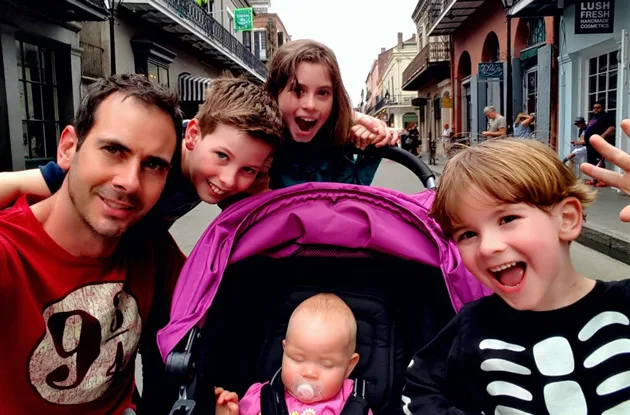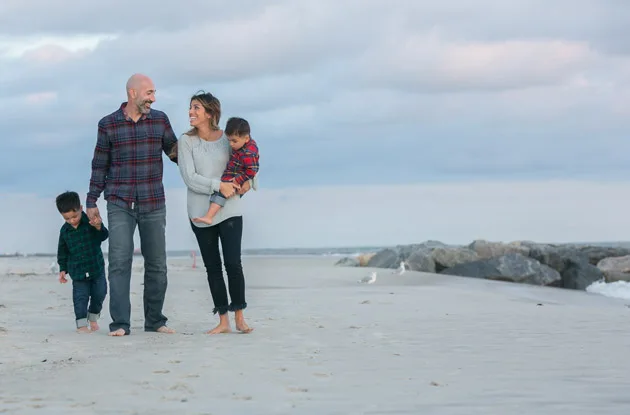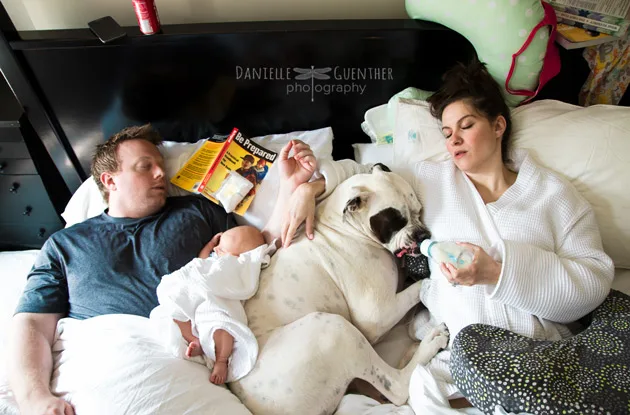The mission at Tinkergarten™ is to teach parents to help kids play, tinker, and explore the world so they become curious, capable, and well-balanced people. For parents and educators, activities are designed and tested in our Tinkergarten™ classes. These activities are posted for families anywhere on tinkergarten.com. Currently, Tinkergarten™ offers classes to kids ages 3-7 in Prospect Park, Brooklyn.
 Personal and professional experience, and a good deal of research have helped us to shape these top 10 recommendations for making outside time with kids fruitful and memorable. If you do nothing more than sprinkle these ideas into the experiences you are already having with them, you’ll make a greater impact on your kids, and have a lot more fun along the way.
Personal and professional experience, and a good deal of research have helped us to shape these top 10 recommendations for making outside time with kids fruitful and memorable. If you do nothing more than sprinkle these ideas into the experiences you are already having with them, you’ll make a greater impact on your kids, and have a lot more fun along the way.
1. GET OUT!
Only 1/3 of kids play outside as often as their mothers did. Think about that—that can’t be good. Now, compare that with the speed at which technology gets more intuitive and accessible by the day. Something our family and many others are realizing is that, even without concerted effort, our kids are unlikely to have a problem learning to manipulate devices, play games, or code for themselves (incidentally, all great ways to learn). Their friends will do it, they’ll do it in school, they’ll do it on the go. So since these skills will effectively come for “free,” it’s time for parents to start using their spare time to leave the i-whatever at the door, and get outside!
Don’t worry about following any activity step-by-step, just give it a shot and make it yours. Whatever you do together, they’ll benefit from being outside—and being with you.
Ok, I’m in. But where do we go? You don’t have to venture to a national park, or hike deep in the woods where only the most grizzly of mountain men go. Your kids can get tons of benefit in a local park, that small woody patch on the edge of the neighborhood, or even the tree-spotted land on the edge of the sports fields—just target a place where nature has been allowed to do its thing. if you do want help finding green spaces near you, visit naturefind.com.
Why outside? Mounting research, our own direct experience, and some good old common sense have convinced us that spending time in nature is vital for our children, and we want to get you hooked too. For all of it’s inspiring space, untapped problems to solve, compelling terrain, and living elements, a natural setting provides the optimal environment for childhood learning, not to mention the contributions to greater physical and mental health and cognitive development. Don’t just take our word for it, read more here:
- See how time in nature makes kids healthier in this gorgeous infographic from National Environmental Education Foundation.
- Read Richard Louv’s Last Child in the Woods (or his latest book The Nature Principle)—it changed our lives.
- View a diagram we made to show how meaningful time outside benefits the whole child.
- Go to Children & Nature Network’s research & resources section or download C&NN’s synthesis of leading research.
2. MAKE IT A SPECIAL TIME.
Kids will already be primed to sense more, enjoy more, learn more and bond more simply because you’re together and you’re in nature. Here are easy ways to take the most advantage of the time:
- Plan outdoor time. Set aside a regular time for learning outside together—Sunday mornings, Saturday afternoons, or maybe a morning or an afternooon during the week. Kids will look forward to it, and you’ll make clear that this is important stuff.
- Be spontaneous (contradictory, I know, but bear with me!). If you are driving along and notice an undiscovered park, strange plant or really inviting field, stop the car, let the family loose and either improvise or do a family favorite—remember, tinkergarten.com is available on your mobile phone!
- Wear special clothes. Kids cue off of simple changes like this. Special clothes say things like, “It’s time for adventure,” “Today is not the average Saturday” or “Time to get dirty!”—all music to little ears.
- Pack a snack. Build in time to enjoy a snack outside together. In our local classes, we often end our time in the woods with a chat-‘n-chew session.
- Help them notice. Prompt them as you leave a non-nature feeling place and transition into a nature feeling one. Ask them what they see, hear, smell, and feel. Ask them to explain how the non-nature and nature were different. Simple, but powerful.
3. LET THEM PLAY.
We shouldn’t need research to tell us that young children naturally play and are highly engaged when hard at play.
“Play is essential to development because it contributes to the cognitive, physical, social, and emotional well-being of children and youth. Play also offers an ideal opportunity for parents to engage fully with their children” Kenneth R. Ginsberg, MD, MSEd—AAP (American Academy of Pediatrics)
And yet, there is a growing movement to protect and reinstate play in kids’ lives.
Why do we need to protect play? Play is indeed at risk. We’ve seen kids free play time decrease by more than 8h/wk in last 25 years. Schools are commonly shortening or doing away with recess time to make space for academic requirements. And, many of us forget that play involves time to imagine, role-play and experiment—all critical to child development. So, if we want our kids to get the most benefit from time outside with us, we should make sure it includes real chances to PLAY.
So, how do you make sure you kids get time for play AND make the time meaningful? Your role is not to direct their play, but to guide it. What is the difference?! If you direct play, you determine how your kids will approach an activity. You may do this by making the activity too structured and focused, telling them how to be successful or showing them exactly what to do. On the flipside, when you guide, you select an environment and a situation that promote playful learning, then allow kids to take it from there, intervening only when things get either unsafe, too frustrating or unproductive. Tinkergarten activities are designed to make guiding play easy and, over time, to teach you how to do it on your own.
4. MODEL WONDER.
Kids are naturally curious, and our end game is to make sure they carry that curiosity into adulthood. Research and experience tell us that if parents openly display wonder, we stoke the fires of curiosity in our kids. So, follow these simple tips, and you’ll teach them how to be and stay curious. When they wonder along with you, they also develop communication and critical thinking…and you may actually feel like you are a kid again!
OK, hit me – how do I demonstrate wonder?
- It’s simple. Ask questions and make “I wonder” statements, like, I wonder why all of the early tree flowers seem to be yellow? How do you think that one daffodil ended up in the middle of this field? Do you think there is anything living under that log? That’s it. Don’t be nervous—you don’t even have to have the answer! (Hint) Simply get them asking questions, have them remember the questions, and you can always go back home and find the answer on wikipedia.
- Act utterly fascinated by even the smallest phenomenon that interests you or your kid. Stop and stare at the ants as they swarm a forgotten PB&J sandwich, sniff a fragrant flower like it’s a fine Pinot Noir, and wow at the view you get when you lie down and look up under a big, old tree. (Secret) Start doing this, and you’ll actually start to actually feel fascinated, and alive.
5. EMBRACE THE DIRTY, THE WET, AND (GASP!) THE DANGEROUS!
“Hang on, I thought you were responsible parents and educators?!”
Water and dirt are not only crucial to survival, but what the science books don’t tell you is that they are meant to be played with.
 It breaks my heart when I see parents shout “No!” to a little one who is trying to splash in a puddle or go down a wet slide at our playground. Mind you, I totally understand what a drag it is to make the long walk home with a soggy-bottomed toddler (believe me, I have to catch my own instincts sometimes, especially when I just washed those pants). Without realizing it, however, parents communicate that getting wet and dirty are bad, and they cut off kids’ chance to explore some of the most liberating, cognitively stimulating, and engaging aspects of being outside.
It breaks my heart when I see parents shout “No!” to a little one who is trying to splash in a puddle or go down a wet slide at our playground. Mind you, I totally understand what a drag it is to make the long walk home with a soggy-bottomed toddler (believe me, I have to catch my own instincts sometimes, especially when I just washed those pants). Without realizing it, however, parents communicate that getting wet and dirty are bad, and they cut off kids’ chance to explore some of the most liberating, cognitively stimulating, and engaging aspects of being outside.
Go outside, even if it’s raining or everything is wet from the last storm. Make time to get dirty and wet (dress everyone appropriately if it helps). Oh, and here is an easy one – if mom or dad get dirty and wet too, you’ll completely blow their minds!
Kids learn more “on the edges.”
Even before we had kids, Brian and I observed our friends’ and family members’ kids at play. And as a teacher and administrator, I have logged countless hours overseeing elementary school recess. It’s remarkable, and highly predictable—kids always gravitate toward “the edges”—the boundaries of a field or park, the uneven patches of ground, a thick grove of trees, and, of course, puddles! Any place that is not the “logical” place that, frankly, most adults would think to be. After observing this over and over, we wondered if these kids were just testing us. What we’ve found, however, is that kids are drawn to “the edges” because they need to be there in order to learn. Kids learn more when they are challenged and can take risks. It may sound crazy, but so many playgrounds and man-made environments are too safe for optimal learning. So, remember, the further off the beaten path you can guide them, the more they will learn.
6. GIVE THEM THE RIGHT SIZED CONTAINER.
You mean, to hold their Halloween candy? Nope.
By container, we mean the space in which kids are free and encouraged to roam. Parents increase the size of a kid’s “container” when we establish broad but safe boundaries, then step back to let kids move independently within those boundaries. On the flip side, we decrease the container size by setting limits that are too tight, hovering over them, and/or stepping in as they attempt to explore.
Remember your childhood. If you were anything like us, you stretched the limits of how long you could play outside without direct adult supervision.
Brian and I are always describing to one another the made up games, role-plays, and harrowing adventures from our respective childhoods. Those outdoor adventures, replete with sights, sounds, smells, and feelings are likely the one’s you remember, too. It’s simple—widen that container, and start burning some of those memories in your kids’ brain.
Seems like you could go too far, though. So what is the right balance?
The goal is the make the container as big as possible for safe, appropriate (for age, ability, etc) learning. For example, you don’t want to leave your five-year-old to wander alone, but you also want her to experience what it feels like to explore on her own. So perhaps don’t let her out of your sight completely, but let her teeter, stumble and maybe even fall a bit. She’ll probably remember, fondly, that family hike where she scraped her knee and lived to tell her friends all about what an adventure it was.
7. YOU CAN SET A FEW, KEY RULES, AND STILL BE A HIP PARENT.
You really don’t need many rules outside, but here are the ones that help us the most:
- If you can’t see me, you’ve gone too far.
- If I make my signal (ours is three whistle blows in a row), stop and come back. When you first go out into a new park, area of the woods, etc. test out this rule. We make it into a game and kids actually find it fun.
- Nil by mouth. I owe the verbage, here, to my mentors in the UK, but teaching kids to put nothing in their mouths keeps us all out of all kinds of trouble.
- While we are on safety, we get a lot of questions about first aid. Unless noted, our activities are not so risky that you need any first aid materials or knowledge beyond a first aid kit and good, common sense. If you do want to know more about first aid for kids when you are camping, backpacking or otherwise adventuring outside, I find backpacker.net’s take on it to be grounded and informative. You can also check out the Red Cross’s anatomy of a first aid kit.
8. PROMPT…THEN TAKE A MINUTE TO LISTEN.
Ask open-ended questions. Every Tinkergarten activity comes with sample questions. Here are some old standbys that always seem to do the trick:
- “Tell me about your (collection you just made, structure you just built, instrument you just fashioned out of antler and bone…whatever kids have produced).”
- “How did you do that?” Note: If they don’t give you much, probe further—“What did you do first?” or “How did you get started?”
- “How did you get the idea (to climb that tree, move that log, make that design out of pine cones, etc.)?”
- What was challenging about that? What felt easy about that?
- Which is your favorite (tree, log, bird, etc.). Why?
Listen as attentively as you can. We so often have to choose between our kids and the laundry list of other things demanding our attention. Make this a time to give them undivided attention. They’ll notice, and you’ll find that by doing so, you’ll help them to flourish.
When you ask a question or prompt them, give kids a few seconds longer to respond than you typically would. You may be surprised by how much a little extra wait time helps them start to talk.
9. PRAISE A JOB WELL DONE!
Be sure to praise, especially after resisting the temptation to help your kid too much. When a kid gets praise for his/her independent effort, that praise is like gold.
But, ensure your focus is in the right place. Praise the effort or outcome, and not their intelligence or natural abilities. It turns out that when we praise effort, we encourage kids to try again, try harder and persevere. But when we praise intelligence or natural ability, we communicate that a kid’s success is due to innate ability vs. due to how they approached the challenge. So, when that child inevitably hits upon a challenge that is too difficult, they may suffer anxiety. They may also refrain from trying, out of fear that failing will undo their “smart” or “talented” identity. Seems counter-intuitive, but the research backs it up.
Also, be sure to praise true effort. Empty praise (i.e. praising when he/she hasn’t really done a great job) can have the same ego-inflating and, ultimately, anxiety-inducing effects as praising a kid’s ability. If you think kids can do even more, encourage them to build on what they have done or take it further. Encouragement can teach kids to welcome challenges and face them with a positive, persistent attitude.
10. HAVE FUN!
Let yourself go. Get dirty. Get wet. Climb something. Pick up that creepy crawly. Run fast! This is also YOUR chance to shed your container, reconnect with nature and enjoy meaningful interactions with your kid(s). Have a fabulous time—if you are actually having fun, your kids will notice and do the same!
Tinkergarten, just launched by two relatively new parents, aims to provide parents with ways to turn time spent with their kids into powerful learning moments. Classes for kids ages 3-7 are held in Prospect Park.





















